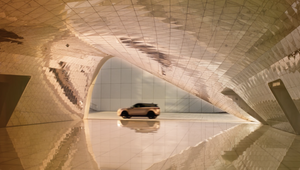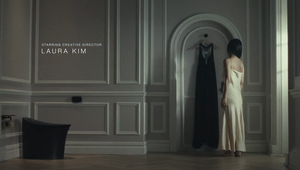
The Future of Storytelling: How Virtual Production is Transforming the Creative Industry

The creative world is in the midst of an exciting transformation, and at the heart of this change is Virtual Production (VP). For those who may not be familiar, VP is a game-changer. Imagine a studio where you can create entire worlds with the push of a button, blending real-life actors and settings with digital landscapes so seamlessly that you can’t tell where one ends and the other begins. It's a technology that’s turning heads—and for good reason.
The Rise of Virtual Production
At its core, Virtual Production uses LED screens that are the size of a green screen, but instead of just showing a single colour, they display incredibly detailed, 3D environments which the actors can interact with and feed from. These backgrounds move and shift as the camera does, creating the illusion that you’re filming on location, even though you’re in the comfort of a studio. The result, you get the look and feel of a big-budget shoot without the need to travel across the globe.
What’s driving this revolution, well a big part of it is the amazing leaps we’ve made in computer processing power and screen technology. We’re now at a point where the digital worlds we create look more real than ever, with lighting and textures that perfectly mimic the real thing. This means more creative freedom and flexibility than we’ve ever had before.
Unlocking New Creative Possibilities
In the past, creating these kinds of scenes required a lot of technical know-how. You had to be a whizz with 3D software, which left a lot of the creative decisions in the hands of the techies. But that’s changing. Today, Virtual Production is opening up new doors for all kinds of creatives, allowing directors, DPs, and even those without a deep technical background to build the scenes they’ve always envisioned.
For me, the most exciting part of this is how much easier it’s become to bring big ideas to life. I’ve always had a love for creating striking visuals, but now I can do it without needing years of 3D training. The technology has evolved to the point where it’s intuitive and accessible, letting me focus on the creative side of things.
Key Industry Insights and Challenges
One of the biggest driving forces behind the shift to VP is the sheer efficiency and adaptability it offers. The ability to reduce physical shoots without sacrificing creative quality is essential in today's fast-paced production world. Many companies face logistical challenges, whether it’s due to travel restrictions, budget constraints, or environmental concerns. VP can help solve this problem by scanning and replicating real-world locations digitally, allowing entire productions to take place without the traditional hassles of on-location filming.
Another essential point raised is collaboration in real-time. With VP, there’s greater control during the production process because everyone – from directors to actors – can see exactly what the final shot will look like on set. This allows for instant adjustments in lighting, camera positioning, and even acting, ensuring that each scene aligns with the director's vision.
Additionally, I’d like to point out the integration of generative AI tools, a development that could streamline production workflows even further. This will enable artists and creatives to easily craft digital worlds and sequences, even without extensive knowledge of 3D modelling, enhancing storytelling through innovation.
Unlike traditional digital twins (I’ll explain more later), generative AI in a 3D environment is relatively new and totally unique to the project I have been working on with WPP and NM Productions. This means that generative AI is opening up creative possibilities, making virtual environments more photorealistic and affordable for broader use in productions.
A New Era of Control and Quality
One of the things that’s been most rewarding about diving into VP is the level of control it gives us. In traditional filmmaking, there are so many steps where things can get lost in translation. You might have an idea in your head, but by the time it goes through all the different stages of production, it can end up looking quite different on screen.
With Virtual Production, the creatives and the director can be involved in every step of the process, from scanning real-world locations with drones and robotics to lighting the digital set exactly how we want it. This means we can keep the creative vision intact from start to finish, ensuring the final product is exactly what we had imagined.
VP is also setting a new standard in efficiency. No longer does a production need to worry about the weather, travel delays, or location restrictions. By utilising this tech, we can now shoot complex scenes in a studio and have full creative control.
Challenges and Adaptation in the Future
One challenge, I’d like to mention, is ensuring that smaller production companies also have access to VP tools. As these technologies become more accessible, even independent filmmakers will benefit, allowing the democratisation of high-end production techniques. Moreover, as these tools evolve, there will be a significant need for upskilling and learning within the creative and technical communities.
Though I highlight the excitement around the tech, I’d also like to stress that VP isn't a universal solution for all productions. There will still be projects that require traditional filming methods, but by identifying when VP is most appropriate, production teams can deliver cost-effective, visually stunning work.
The Future of Virtual Production
Looking ahead, it’s clear that Virtual Production is only going to get better. As the technology continues to improve, we’re going to see even higher-quality digital environments, faster processing times, and more realistic lighting. This will open up even more creative possibilities, allowing us to push the boundaries of what’s possible in film and advertising.
The best part is that VP is becoming more accessible, even for smaller productions. As the costs come down and the technology becomes easier to use, we’ll see more and more people experimenting with it, leading to some truly innovative work. And with generative AI tools, even those who are just starting out will be able to create stunning digital sets.
Sustainability and Long-Term Impact
Another huge advantage of VP is its potential to make productions more sustainable. By creating digital twins—virtual replicas of real-world locations—we can shoot commercials and films without ever needing to leave the studio. This not only saves time and money but also reduces our carbon footprint. Imagine filming a commercial for a supermarket without having to close the store for a day, or when you’re in a volume stage you can control the weather. In fact, you control everything, making the shoot much more efficient. It’s a win-win.
Embracing the Revolution
So, where does this leave us, well Virtual Production is here to stay, and it’s going to play a major role in shaping the future of our industry. If you’re a creative or part of a production company, now is the time to start exploring what VP can do for you. It’s a powerful tool, but it’s not always the right one for every job. My advice is get an expert involved early on to help you decide when and how to use it. And don’t be afraid to embrace this technology—after all, it’s opening up a whole new world of possibilities.
The future of storytelling is incredibly bright, and Virtual Production is leading the way. It’s an exciting time to be in this industry, and I can’t wait to see where it takes us next.
By Brett Danton @NM Talent For further enquiries please contact: Anissa Payne or Tash James at enquiries@nm-productions.com















